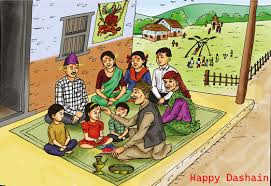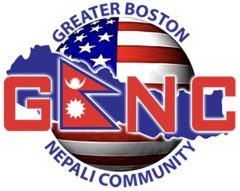Dashain, also known as Vijaya Dashami, is the most auspicious and longest festival celebrated by Nepalese people all over the world. It typically falls in late September or early October, depending on the lunar calendar.

The festival commemorates a great victory of the gods over the wicked demons. One of the victory stories told is the Ramayana, where Lord Rama with the blessings of the goddess Durga killed the great demon Ravana. The other story involves Lord Durga’s victory over the demon Mahishasura. Both represent the victory of good over evil.
The festival lasts for 15 days, with the most important days being the first, seventh, eighth, ninth, and the tenth. Each day of the festival has its own importance, rituals, and ceremonies.
- Ghatasthapana (Day 1): The festival starts with the sowing of maize and barley seeds in a pot called a “ghada,” symbolizing the goddess Durga. It is covered and kept in a sacred and clean place where sunlight doesn’t reach.
- Phulpati (Day 7): A collection of sacred plants and flowers is brought to the home from the Gorkha district in a parade.
- Maha Asthami (Day 8): The fiercest form of Goddess Durga is worshiped and animals are sacrificed at temples as a symbol of submission and respect to the goddess.
- Maha Navami (Day 9): The official military sacrifices are held in one of the Hanuman Dhoka royal palaces, the Kot courtyard. On this day, tools, machines, and vehicles are also worshipped.
- Vijaya Dashami (Day 10): On this day, elders put a mix of rice, yogurt and vermilion (Tika) on the forehead of younger relatives, along with Jamara (the barley shoots grown from the first day). This act is supposed to bring blessings of the goddess Durga. Elders give “Dakshina,” or a small amount of money, along with the blessings.
In addition to these religious and cultural aspects, Dashain is also a time for family gatherings, feasts, and flying kites. People from far and wide return to their home villages and towns, leading to a sort of mass migration within Nepal during this festival.
